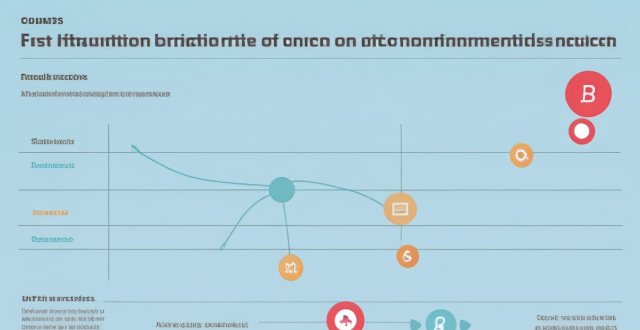Climate Logie

Can climate-smart technology be used to mitigate the effects of climate change ?
Climate-smart technologies aim to reduce greenhouse gas emissions and enhance resilience to climate change impacts. Renewable energy sources, energy efficiency improvements, and nature-based solutions are key examples. These technologies offer promising solutions but face challenges related to cost, policy, and potential unintended consequences.

What is the impact of climate financing on green technologies ?
Climate financing is crucial for the advancement of green technologies. It supports R&D, deployment, innovation, and policy development. By funding research, pilot projects, startups, and policy advocacy, climate financing helps reduce emissions and promote sustainability.

What are the benefits of international climate cooperation ?
International climate cooperation is crucial for mitigating global warming, adapting to climate change, protecting biodiversity, creating economic opportunities, enhancing global security, and promoting social justice. By working together, countries can reduce greenhouse gas emissions, develop clean energy technologies, share resources and knowledge, strengthen infrastructure, conserve ecosystems, prevent extinction, grow a green economy, create jobs, manage resources more effectively, improve public health, address climate injustice, and ensure equitable access to sustainable technologies. This collective effort is essential for preserving our planet's delicate ecosystems and ensuring a sustainable future for all.

How do Climate-Smart Technologies contribute to sustainable development ?
Climate-smart technologies play a crucial role in sustainable development by offering solutions that mitigate climate change, adapt to its impacts, and ensure food security while promoting economic growth. These technologies are resource-efficient, low-carbon, and resilient, making them integral components of the sustainable development goals (SDGs). Key ways in which climate-smart technologies contribute to sustainable development include: - Mitigating climate change through renewable energy sources like solar power, wind energy, and hydroelectric power; energy efficiency measures such as building insulation, LED lighting, and smart grids; adapting to climate impacts with water management systems like rainwater harvesting, drought-resistant crops, and flood control infrastructure; agricultural innovations such as precision farming, agroforestry, and cover cropping; enhancing economic growth with green industries like eco-tourism, clean manufacturing, and carbon trading markets; creating jobs and alleviating poverty through sustainable agriculture, renewable energy sector, and climate finance; promoting social well-being through health and safety measures like air quality monitoring, disaster early warning systems, and access to clean cooking solutions; and education and awareness initiatives including climate education programs, community-based adaptation projects, and research and development.

Can Climate-Smart Technologies help reduce global warming ?
Climate-smart technologies, designed to mitigate and adapt to climate change impacts, aim to reduce greenhouse gas emissions, enhance carbon sequestration, and improve resource efficiency. These technologies can help reduce global warming through energy efficiency, renewable energy, and carbon capture and storage. They also aid in adaptation through water management, agricultural innovation, and early warning systems. Co-benefits include resource conservation, economic growth, and health improvements. However, scaling up these technologies, policy support, and equity are challenges that need to be addressed for their successful implementation.

How do Climate-Smart Technologies address environmental justice issues ?
Climate-smart technologies (CSTs) are innovative solutions that address climate change while promoting economic growth and social development. These technologies have the potential to address environmental justice issues by ensuring equitable distribution of the benefits and risks of climate change across different communities. CSTs can help reduce emissions from deforestation and forest degradation, promote renewable energy sources, enhance adaptive capacity, improve energy efficiency, support sustainable agriculture, and encourage waste reduction and recycling. By prioritizing equity in the development and deployment of these technologies, we can work towards a more just and sustainable future for all.

What are the potential economic impacts of widespread adoption of Climate-Smart Technologies ?
The widespread adoption of climate-smart technologies has the potential to bring significant economic benefits, including job creation, energy savings, improved public health, and enhanced competitiveness for companies offering sustainable products and services. These technologies aim to reduce greenhouse gas emissions, adapt to the changing climate, and ensure food security while promoting sustainable development. By implementing energy-efficient measures and transitioning to renewable energy sources, businesses and households can significantly reduce their energy bills. Reducing air pollution and other environmental hazards through the adoption of clean technologies can lead to improved public health outcomes. Companies that adopt climate-smart technologies may gain a competitive advantage by offering more sustainable products and services. Overall, the adoption of climate-smart technologies presents numerous opportunities for economic growth and sustainability.

What are some innovative technologies being developed to address climate change ?
The article provides a summary of innovative technologies being developed to address climate change. These include renewable energy sources such as solar, wind, hydroelectric, and geothermal power; carbon capture and storage (CCS) methods like post-combustion capture, oxy-fuel combustion, and pre-combustion capture; electric vehicles (EVs); smart grid technology; nuclear fusion; afforestation and reforestation; and green building design. These technologies aim to reduce greenhouse gas emissions, increase energy efficiency, and promote sustainable practices in order to combat climate change and transition towards a more sustainable future.

How does climate information sharing help in mitigating climate change ?
Climate information sharing is vital for mitigating climate change by enabling informed decision-making, raising public awareness, supporting research and innovation, promoting international cooperation, facilitating adaptation strategies, and leveraging technology. It empowers governments, businesses, communities, and individuals to take actions that reduce greenhouse gas emissions and adapt to the changing climate.

What is climate financing and why is it important for combating climate change ?
Climate financing is crucial for mitigating climate change by funding initiatives that promote renewable energy, sustainable infrastructure, and adaptation to climate impacts. It enables international cooperation, drives innovation, supports policy development, and encourages private sector participation. Furthermore, it contributes to achieving global goals and enhances public awareness about climate issues.

How can climate financing be used to mitigate and adapt to climate change ?
Climate financing is a key mechanism for both mitigating and adapting to the effects of climate change. It involves funding initiatives such as renewable energy projects, green transport, energy efficiency improvements, and research into cleaner technologies for mitigation. For adaptation, it supports infrastructure resilience, agricultural adjustments, health system strengthening, and community-based strategies. International cooperation through global climate funds and technology transfer further enhances the impact of climate finance. Collaboration among various stakeholders is crucial to effectively utilize climate finance for a sustainable future.

How do climate predictions account for natural climate variability ?
Climate predictions account for natural climate variability by incorporating natural drivers, using past climate records, ensemble modeling, focusing on long-term trends, assessing uncertainties, scenario analysis, and peer review and revision.

What are the implications of ignoring the views of climate skeptics on climate policy ?
Ignoring climate skeptics' views can lead to lack of diversity in thought, potential for misinformation, loss of public trust, opportunity costs, and polarization. Policymakers should consider diverse perspectives and engage with all stakeholders for effective solutions.

How can we differentiate between legitimate climate science and the opinions of climate skeptics ?
This article provides guidance on how to differentiate between legitimate climate science and the opinions of climate skeptics. It emphasizes the importance of looking for peer-reviewed research, checking the source of information, evaluating the evidence, considering the motives of those making claims, and consulting experts in the field. By following these guidelines, individuals can make informed decisions about climate change and contribute to efforts to address this critical issue.

What is a climate refugee ?
Climate refugees are individuals who must relocate due to environmental changes from climate change, such as sea-level rise and extreme weather events. This displacement affects social structures, economies, and cultures, and there is a need for international cooperation and sustainable practices to address the issue. There is currently no specific legal status for climate refugees under international law.

How do international climate agreements influence national climate policy assessments ?
International climate agreements influence national climate policy assessments by setting global goals and targets, providing guidance on best practices, facilitating technology transfer and cooperation, enhancing transparency and accountability, and offering financial support for climate action. Examples of such agreements include the UNFCCC, Kyoto Protocol, and Paris Agreement.

What is the significance of climate finance in achieving the goals of global climate governance ?
Climate finance is vital for achieving global climate governance goals, supporting mitigation, adaptation, sustainable development, innovation, cooperation, transparency, policy integration, capacity building, and private sector engagement.

What are the key recommendations of TCFD for companies ?
The Task Force on Climate-related Financial Disclosures (TCFD) offers a framework for companies to report on their climate-related risks and opportunities. Key recommendations include identifying and assessing physical, transition, and liability risks; disclosing risk management strategies, mitigation measures, and monitoring systems; identifying market, technological innovation, and brand value enhancement opportunities; capturing business model changes, investments in low-carbon technologies, and collaborative partnerships; using consistent methodologies with standardized metrics, scenario analysis, and third-party verification; and engaging stakeholders through surveys, public forums, and transparent reporting processes.

How can climate resilience help mitigate the impacts of climate change ?
Climate resilience is a crucial strategy for mitigating the effects of climate change. It involves reducing vulnerability, enhancing adaptive capacity, promoting sustainable development practices, and fostering social cohesion. By implementing these strategies, communities can become more resilient and better able to cope with the impacts of climate change.

What is climate financing ?
Climate financing is essential for implementing projects that mitigate climate change and adapt to its impacts. It includes public sector involvement, private sector participation, support from multilateral and bilateral institutions, and innovative mechanisms like climate taxes and crowdfunding platforms. These financial resources are vital in addressing the global challenge of climate change by enabling access to capital for sustainable initiatives.

How do climate summits contribute to global efforts to combat climate change ?
Climate summits play a crucial role in the global fight against climate change by setting targets and goals, encouraging international cooperation, promoting policy and technological innovation, raising awareness and mobilizing action, and financing climate action.

How can climate financing help developing countries ?
Climate financing is essential for developing countries to adapt to and mitigate climate change. It funds infrastructure projects, capacity building, renewable energy, sustainable land use, and research & development. These efforts help build resilient economies and reduce environmental impact.

How can we use climate predictions to mitigate the effects of climate change ?
Climate predictions are vital in mitigating climate change impacts. They help in adaptation planning, guiding mitigation strategies, informing policy development, raising awareness, and driving research and innovation. By understanding future climate conditions, we can take proactive measures to reduce the effects of climate change on our environment and society.

How can we address the concerns of climate skeptics and promote climate action ?
The text discusses ways to address concerns of climate skeptics and promote climate action. It emphasizes the importance of understanding their concerns, providing accurate information, building trust in science, addressing perceived costs, and overcoming political beliefs. The author suggests using educational websites, scientific studies, news articles, economic analysis, job creation, efficiency measures, common ground, local impacts, and dialogue to counter misinformation and skepticism about climate change.

What innovative materials and technologies are being used in modern construction to address climate challenges ?
Innovative materials and technologies in modern construction are being used to address climate challenges. These include green building materials, energy-efficient technologies, water efficiency solutions, and waste management strategies. Recycled materials, eco-friendly insulation, low-emission coatings, solar power systems, smart building management, high-performance glass, rainwater harvesting systems, water-saving fixtures, on-site recycling centers, and waste-to-energy technologies are among the key solutions being adopted. These advancements aim to reduce the environmental impact of buildings, improve energy efficiency, and enhance sustainability.

What are the risks associated with climate financing ?
Climate financing is vital for mitigating climate change but comes with economic, policy, environmental, social, reputational, and technical risks that must be managed through strong governance and legal frameworks to ensure effectiveness and credibility.

How does the Paris Climate Agreement address climate justice ?
The Paris Climate Agreement, adopted in 2015, emphasizes climate justice and the need for all countries to take action to limit global warming. It recognizes the unequal impacts of climate change on vulnerable communities and developing countries, and provides mechanisms for financial support, capacity building, and loss and damage compensation. The agreement aims to create a more equitable and just response to the global challenge of climate change.

What is a climate summit ?
A climate summit is a meeting where international participants discuss and negotiate solutions to address climate change challenges. They focus on reducing emissions, adapting to impacts, and promoting sustainable policies through agreements informed by scientific evidence. Notable summits include the Earth Summit and COP conferences.

How can climate services support policy making for climate change ?
Climate services support policy making for climate change by providing scientific evidence, assessing impacts and risks, informing mitigation strategies, enhancing capacity building, and facilitating international cooperation. They provide decision-makers with relevant, timely, and reliable information on the state of the climate system, its variability, and its future projections. This information is essential for developing effective policies to mitigate and adapt to the impacts of climate change.

What is the definition of a climate refugee ?
Climate refugees are individuals or groups forced to leave their homes due to the adverse effects of climate change. They face challenges related to basic needs, legal status, employment, social integration, and mental health. Examples include Tuvaluans, Bangladeshis, Sahelians, and Caribbean Islanders.